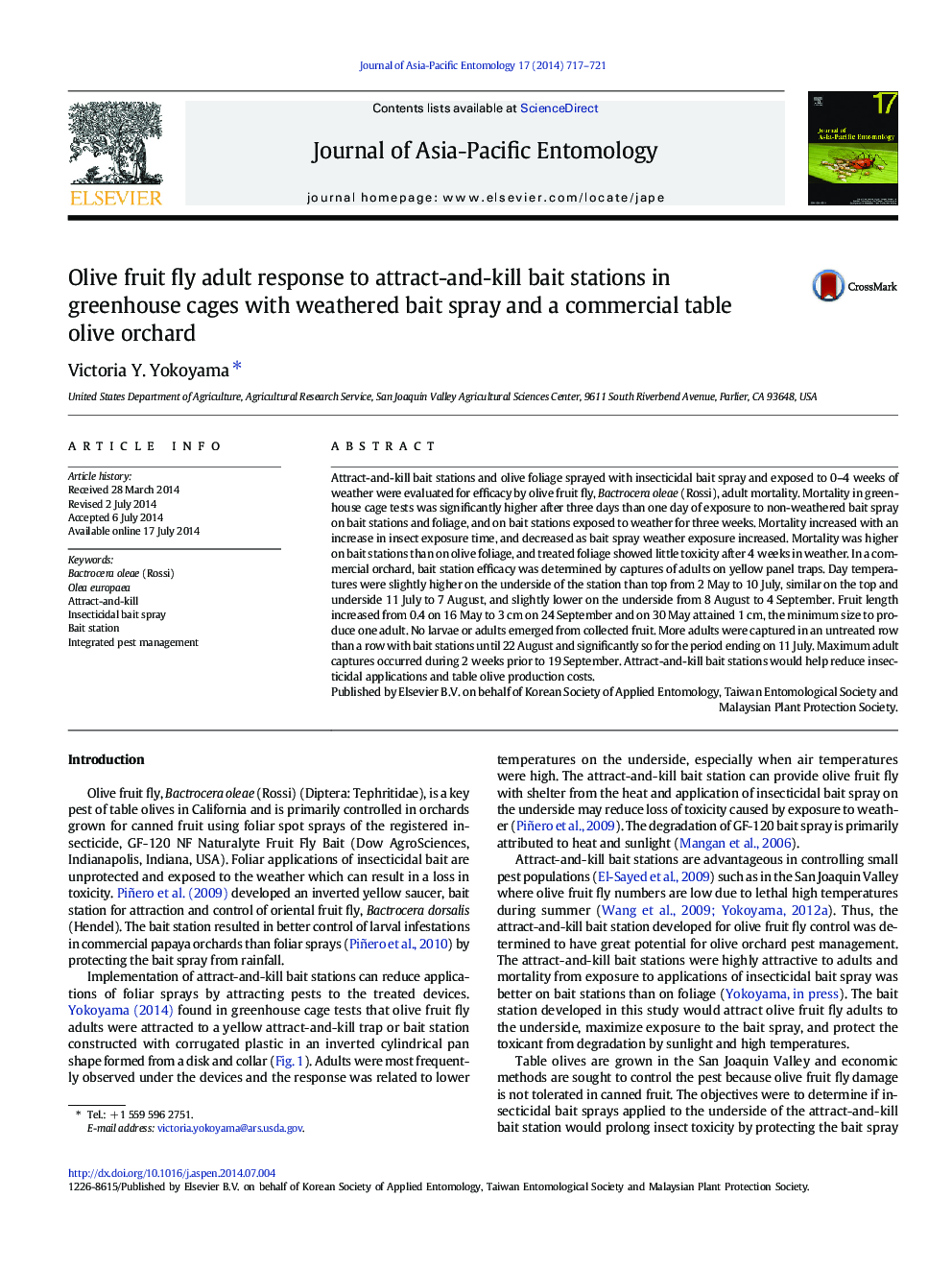| Article ID | Journal | Published Year | Pages | File Type |
|---|---|---|---|---|
| 4524520 | Journal of Asia-Pacific Entomology | 2014 | 5 Pages |
•Olive fruit fly mortality was higher on bait stations than sprayed olive foliage.•Less adults were trapped in rows with bait stations than without until mid-summer.•Attract-and-kill stations can reduce orchard sprays for olive fruit fly control.
Attract-and-kill bait stations and olive foliage sprayed with insecticidal bait spray and exposed to 0–4 weeks of weather were evaluated for efficacy by olive fruit fly, Bactrocera oleae (Rossi), adult mortality. Mortality in greenhouse cage tests was significantly higher after three days than one day of exposure to non-weathered bait spray on bait stations and foliage, and on bait stations exposed to weather for three weeks. Mortality increased with an increase in insect exposure time, and decreased as bait spray weather exposure increased. Mortality was higher on bait stations than on olive foliage, and treated foliage showed little toxicity after 4 weeks in weather. In a commercial orchard, bait station efficacy was determined by captures of adults on yellow panel traps. Day temperatures were slightly higher on the underside of the station than top from 2 May to 10 July, similar on the top and underside 11 July to 7 August, and slightly lower on the underside from 8 August to 4 September. Fruit length increased from 0.4 on 16 May to 3 cm on 24 September and on 30 May attained 1 cm, the minimum size to produce one adult. No larvae or adults emerged from collected fruit. More adults were captured in an untreated row than a row with bait stations until 22 August and significantly so for the period ending on 11 July. Maximum adult captures occurred during 2 weeks prior to 19 September. Attract-and-kill bait stations would help reduce insecticidal applications and table olive production costs.
Graphical abstractOlive fruit fly adults collected in a commercial olive orchard on yellow panel traps placed in an untreated row or row with attract-and-kill bait stations treated with two spring and one fall insecticidal bait sprays.Figure optionsDownload full-size imageDownload as PowerPoint slide
